Making Four Scenes
Over the past few weeks, I have slowly completed the art for the game. It is comprised of four scenes, each having a background, several cut-out figures, and highlighted/glowing versions of each figure.
The classroom game has four factions: Indeterminants, Populists, Slavophiles, and Westernizers. Typically in the classroom, players in these factions sit near each other because it is easier to strategize as a group. But this has the added effect of visually differentiating themselves from other factions so that they are easier to identity for those outside of their group. Indeterminants, who have no faction, will usually sit by people who have similar values, who they have worked with before, or who they hope to ally with soon. When students play Reacting to the Past over zoom, they lose this spacial differentiator. To solve this problem, I decided to create four different scenes where each one would house a different faction.
Below is the art for the four completed scenes:
POPULISTS
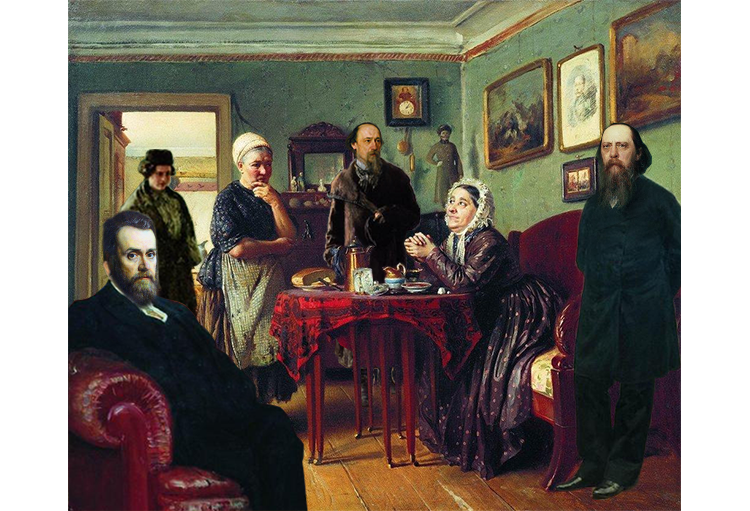
WESTERNIZERS
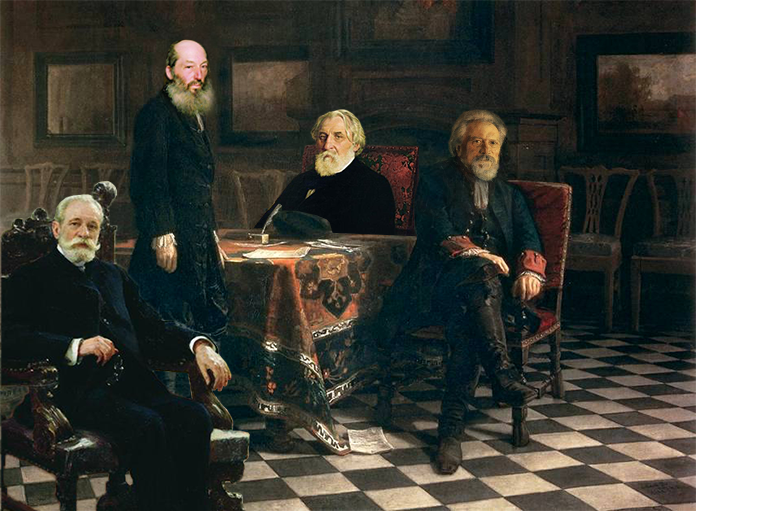
SLAVOPHILES
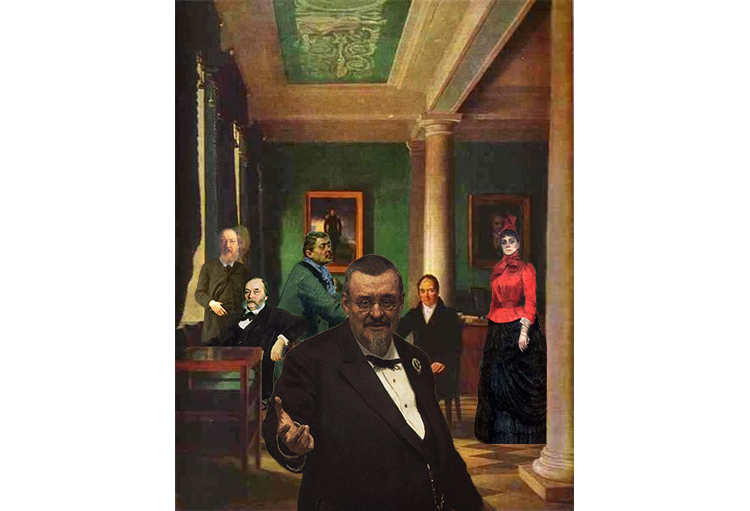
INDETERMINANTS
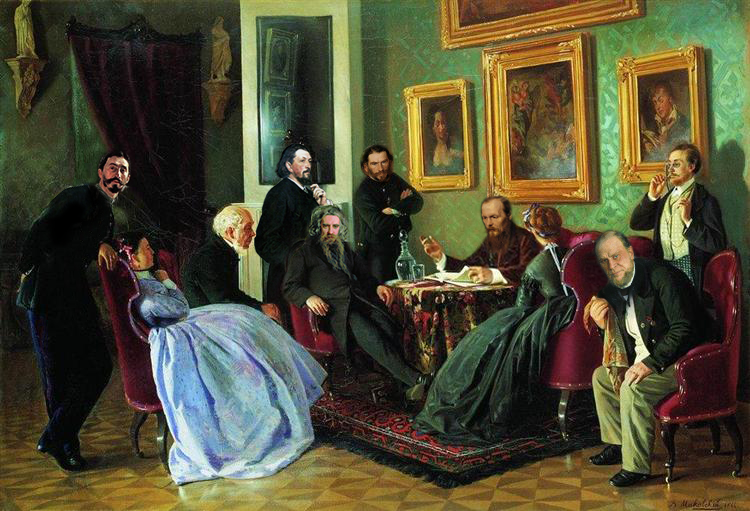
Each scene has the precise number of figures in it that matches the number of playable characters in that faction. They match up in gender and social class as well. The Populist image, for example, is set in a more modest home because of their association with peasants, whereas the Westernizers are in a more luxurious western European-looking room.
At first, I was a little concerned that each of the paintings is a different size. I would have preferred more standardized dimensions. But, upon further reflection, I realized that keeping the base painting unaltered would make students feel even more so that they are playing within the world of these paintings. For this reason (and to take some of the work out of photoshopping for me), I decided to let each painting keep its original dimensions.
I could only find historic paintings of around half of the game characters. For these, I blended their real portrait over the body of another figure so that they could fit into the scene. For example, Repin (far left in the Indeterminate piece) has his real face but the body of a military officer whose uniform I altered so that he would look like a normal, upper-class citizen in a dark suit. The woman in blue to his right represents Elena Shtakenshneider, of whom I had no historic painting. This figure already existed in the base painting, so I did not have to alter her at all.
I'd like to illustrate how I built up these scenes. Below is a sample of the art contained in the Westernizer image. It includes the original painting I started with, the finished altered painting, and the cut-out figure for Leskov. As you will see, Leskov's body was originally that of Tsar Peter the Great, and two of the figures in the final scene are completely new insertions.

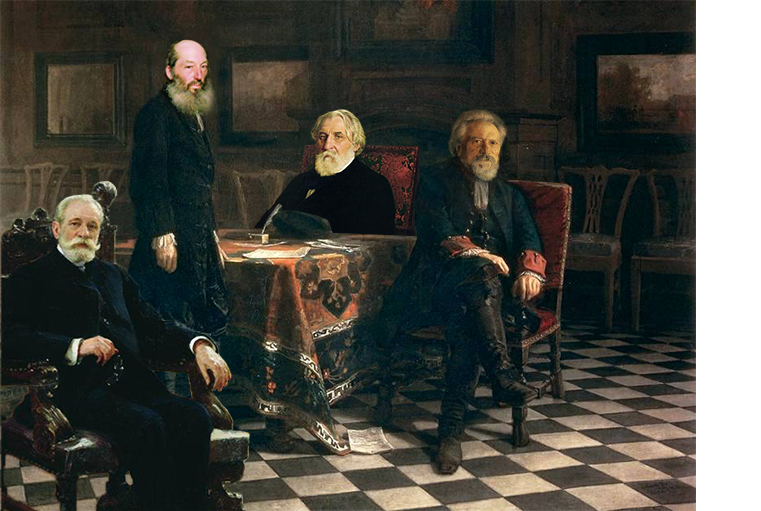
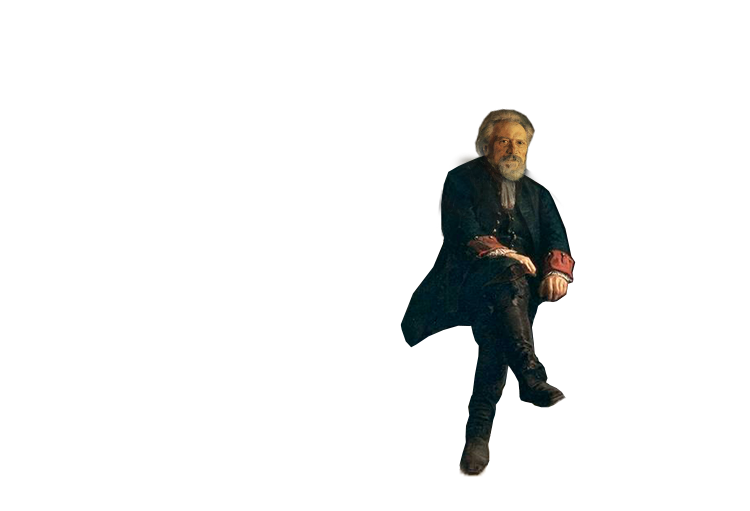
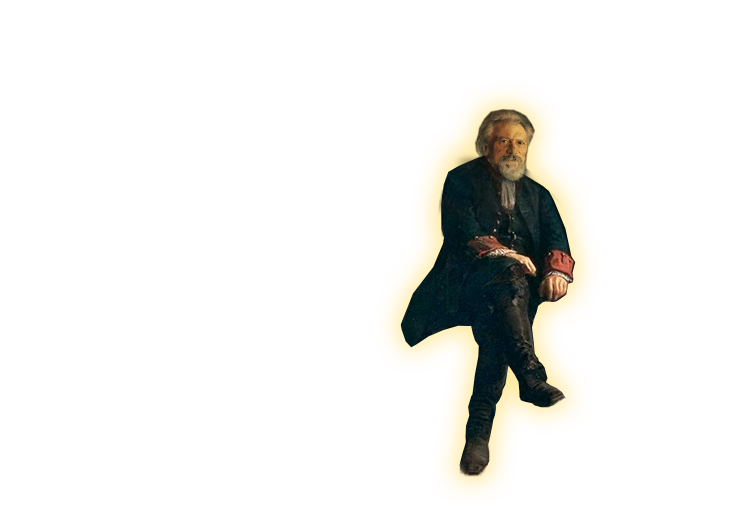
Each of the figures in the scene, whether they were present in the base painting or not, was saved as part of the background as well as on its own layer. I exported each figure individually as a .png file the same size as the background so that I could isolate it in Unity later so it would be easy to click on as an independent Game Object. I knew I wanted the figure to glow or give some other kind of user feedback when the player hovers over it or clicks on it, so I did this twice: once for the cut out figure, and again for that figure with a glowing outline.
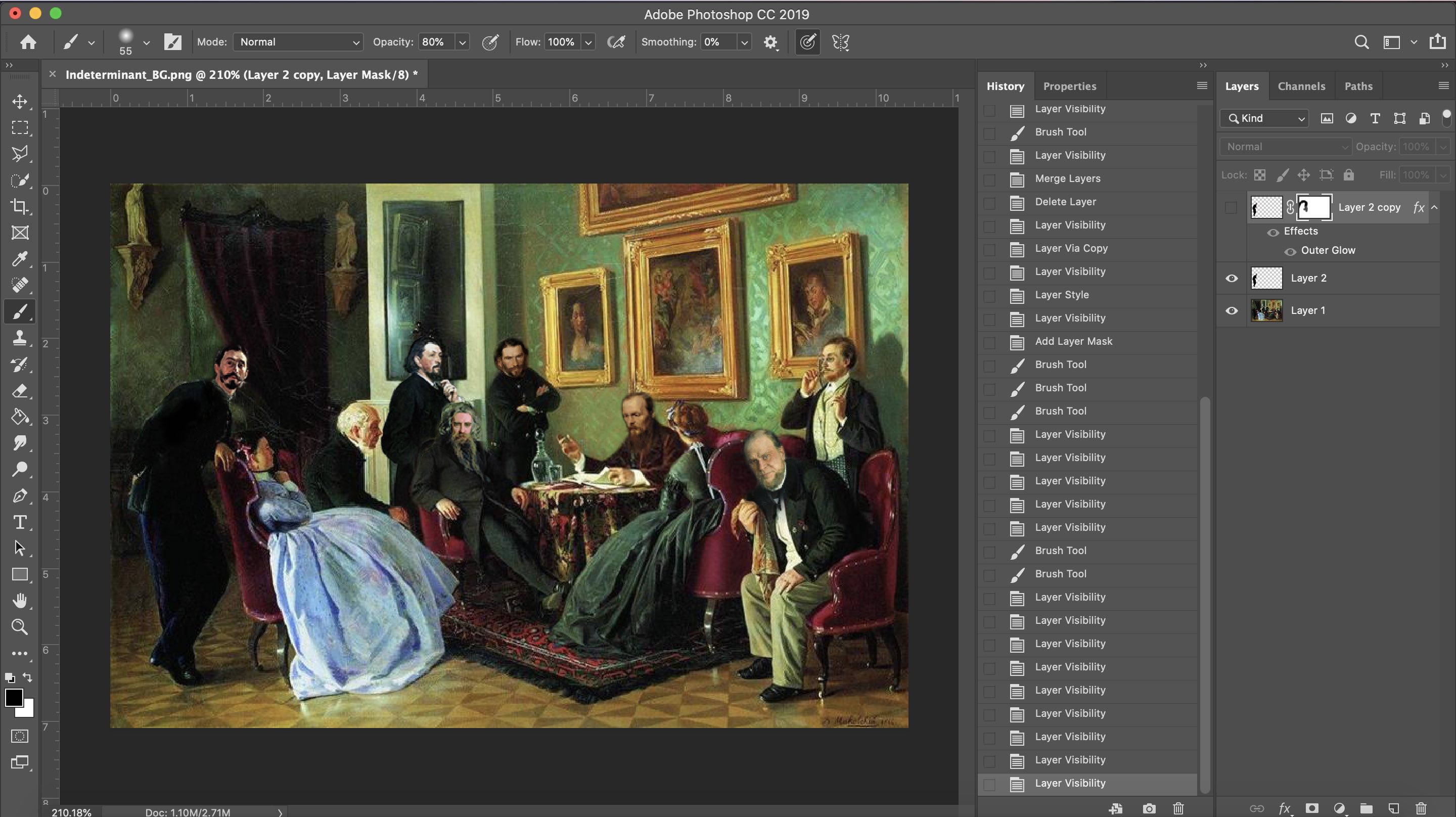
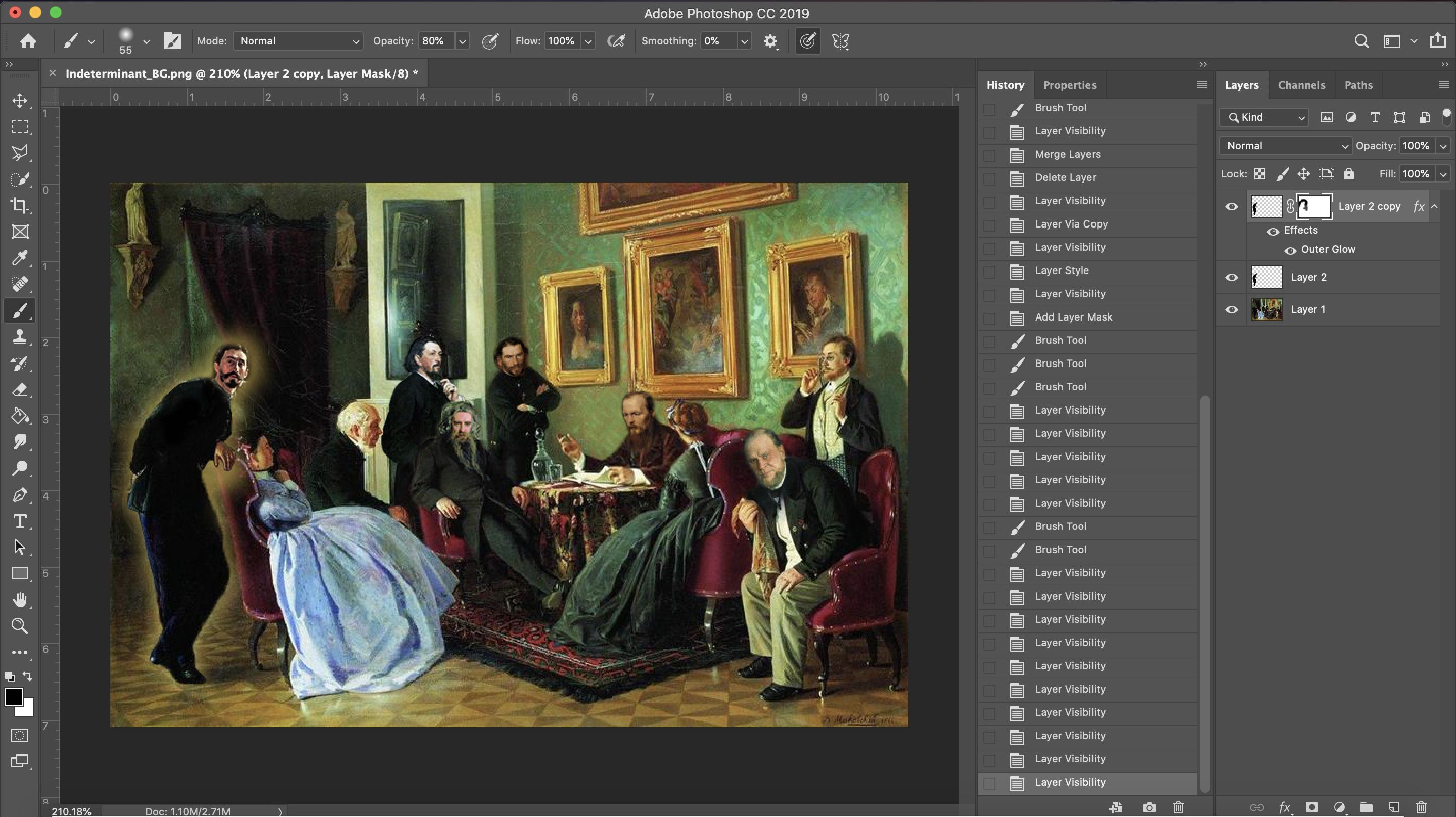
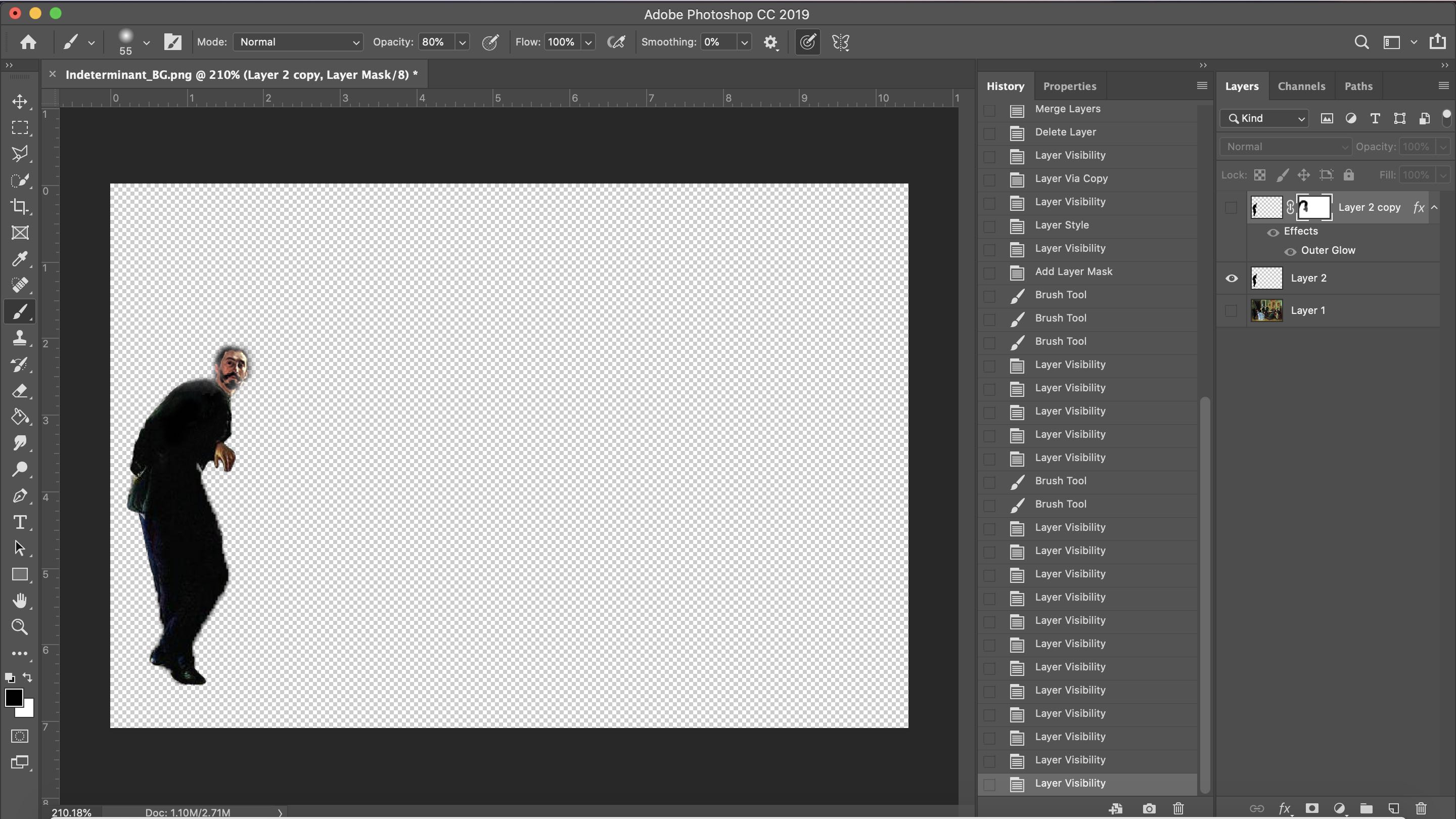
Getting all of the figures was a fun challenge. First, I searched wiki art for historic portraits of all of the game characters and made a list of who I did and didn't have. For those I only had a portrait for, as well as those I didn't have at all, I knew I would need to find full body figures to insert in my soon-to-be-Photoshopped paintings. For these, I used almost exclusively figures that Repin had painted. I simply downloaded some of his paintings where the people contrasted enough with their background to make a clean cut-out, then I cut them out in Photoshop and saved them as new .png files.
I searched through the entire library of 19th and early 20th century Russian Realism art on Wiki Art to look for background scenes that could hold my figures. Much of the art of this period was either portraits, landscapes, or too-busy scenes with many figures. I could only find a few paintings inside peoples' homes with enough room to add more people. I found most of these by narrowing my search to "genre paintings" in this period.
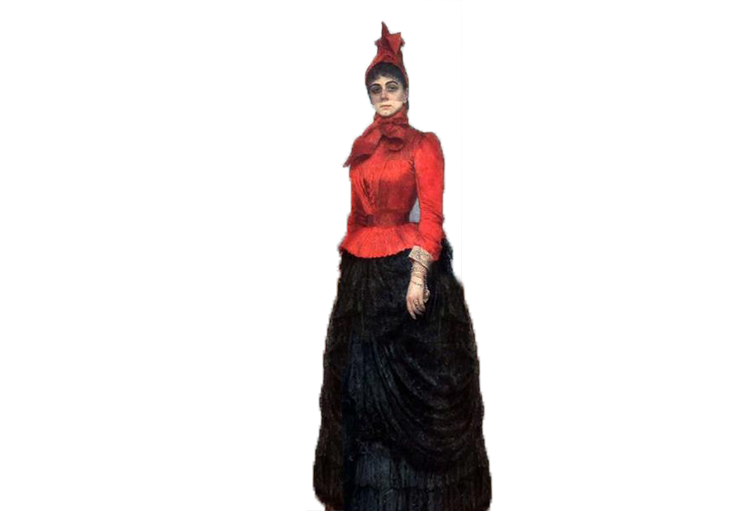
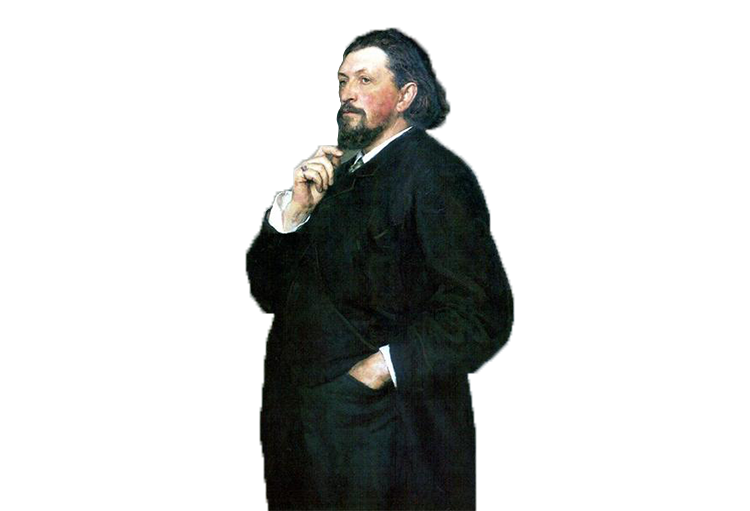
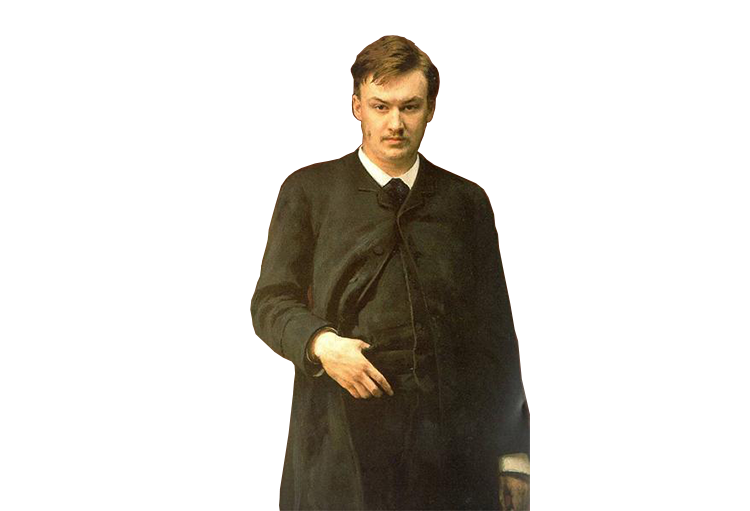
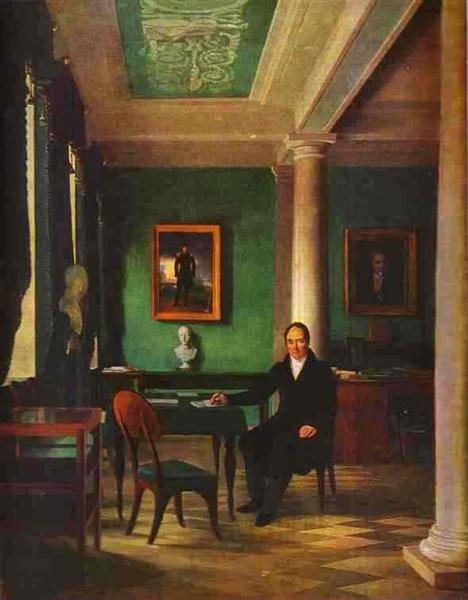
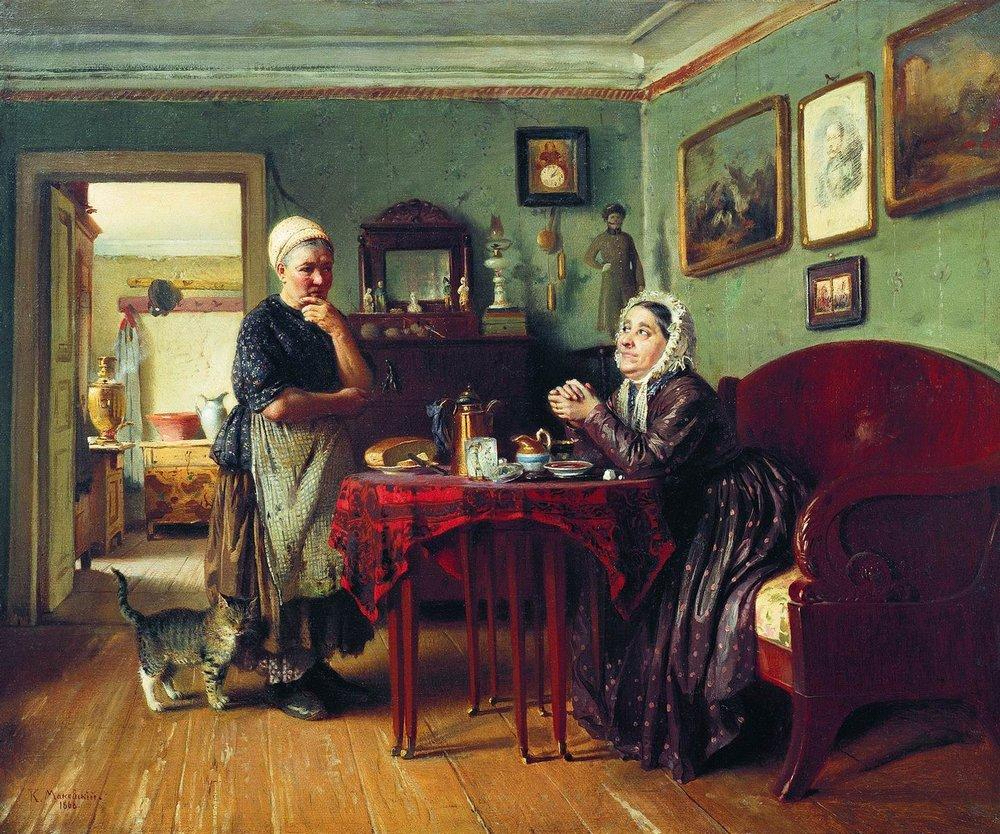
Overall, I am very happy with how the art turned out. I showed the finished images to Linda, who made the classroom game and is the expert on 19th century Russia, and she had very helpful feedback. She thought that the images were good overall: the art I used was period-appropriate, and the way I grouped the factions together made sense. Her only suggestion was to change the Repin figure so that he was no longer a military officer.
My next step for the project is to finished writing the game dialogue. Players can ask each figure the same set of questions, but they will have very different answers based on their role sheet. After I get that done, I can finish coding the game so that the dialogue is functional. Then I can add sound, spruce up the UI, create a menu, and call it good.
Get Reacting to Revolutionary Russia: An Educational Video Game
Reacting to Revolutionary Russia: An Educational Video Game
This game is designed to teach students about Russian literary and revolutionary figures in 1877.
| Status | Released |
| Author | Haley Price |
| Genre | Educational |
| Tags | 2D, Historical, Point & Click, Singleplayer |
| Languages | English |
| Accessibility | One button |
More posts
- PostmortemDec 09, 2020
- Updating the UINov 27, 2020
- Sound Design and AttributionsNov 27, 2020
- Updating the MenuNov 21, 2020
- Updating the BarksNov 21, 2020
- Updating the ArtNov 14, 2020
- Update 1Nov 11, 2020
- FunctionalityNov 03, 2020
- Writing out the DialogueOct 21, 2020

Leave a comment
Log in with itch.io to leave a comment.